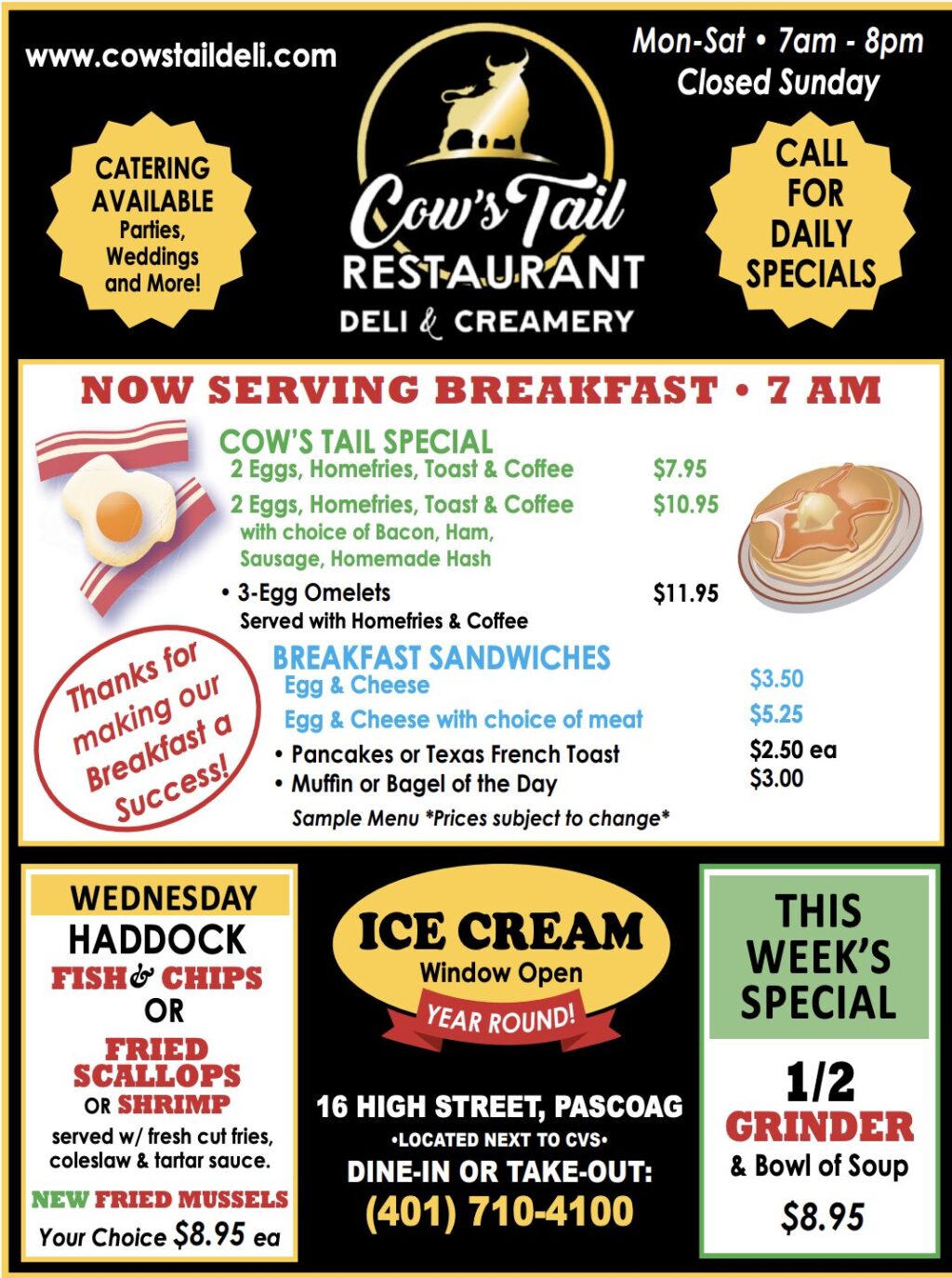PROVIDENCE – A company looking to expand operations on Central Street won their appeal of a ruling by the North Smithfield Zoning Board this week, with a Rhode Island Superior Court judge deeming that the town ordinance that governed the proceedings was invalid.
Material Sampling Technologies filed a complaint against the board last August under the name Tech Realty, LLC, stating that their request for dimensional relief on a proposed expansion project was unlawfully denied. The business, which has operated a precious metal reclamation facility at 800 Central St. since 2011, submitted plans to build a new 23,600-square-foot building on a second property, a vacant, 9.7-acre lot that holds forested wetlands, adjacent to their current operations.
According to the town’s zoning ordinance, the project would require dimensional variances from 70-foot maximum setback requirements for the front, side and rear of the new structure. MST applied for the relief and in 2022, zoners denied their request in a split 2-2 vote, with member Vincent Marcantonio abstaining.
But in a ruling issued on Tuesday, April 9, Providence County Superior Court Judge Melissa Darigan said that the business need not comply with the town’s 70-foot requirement, effectively vacating the decision.

Darigan ruled that the Zoning Enabling Act, which gives the board its power, “unequivocally does not, by its express terms, confer upon municipalities the authority to establish maximum setback lines.”
“Therefore, it necessarily follows that any municipal zoning ordinance purporting to establish a maximum setback is ‘authorizing something less’ than what is provided for in the ZEA by imposing greater restrictions on property owners as to where they may position the sides of their buildings,” Darigan noted in the 14 page decision. “Consequently, this Court finds that, by establishing maximum setback lines, NSZO §12.11(2) impermissibly expanded the authority to regulate setbacks as conferred by the ZEA and is therefore void and unenforceable.”
The ruling marks a victory for the business in what has become a highly controversial plan to expand operations on a property in a mixed use zoning district, which is dominated by residential homes. Hearings held in town over the course of several months in 2022 brought out heavy opposition, with concerns ranging from well safety and lighting, to traffic and quality of life.
The proposal also prompted some town residents to take a closer look at North Smithfield’s water protection laws, as MST’s planned structure would be built on a property holding streams, three acres of forested wetlands and a special aquatic site. During hearings, opponents of the expansion pointed out that prior to map changes approved by the North Smithfield Town Council in 2020, the property was part of a Water Supply Protection Overlay District, which, if applicable, would have triggered additional regulations for approval.
The issue led to creation of a new town board focused on water protection issues in December of 2022, dubbed the Water Supply Review Committee. The group recommended revisions to the town’s ordinance on water protection and a reversal to the original map, which were passed last year. The changes, however, do not affect MST’s proposal, as it was submitted under the prior ordinance from 2020.
And it seems that both the town law that did apply – and the process – were invalid under state governance. Darigan noted that the Zoning Enabling Act requires a vote by five active members, not four as occurred in the 2022 ruling.
That oversight, and MST’s additional concerns that testimony against the project by a town councilor had biased the process, were set aside in the recent court order, which notes that the business should not have had to apply for relief from an invalid ordinance in the first place.
“Tech Realty’s zoning application, the denial of which forms the basis for this appeal, is effectively moot,” Darigan wrote.









There are only a handful of people that REALLY knew what happened from the beginning and I’m talking 2018 when our aquifer and groundwater protection came to light. A very powerful ordinance was written to protect just that, (cue in two superfund sites in the 70’s). That particular ordinance, 6.19 was never challenged until 2018. 2020, and 2022. The powers that be then decided to change the rules for certain businesses that would surpass zoning. They did this during Covid when people had other issues to deal with and never sent notices out to abutters where they could have had a chance to say something. That’s just plain backroom shenanigans. Will this town EVER learn!!!!
There is mention in the article that the testimony of a town councilor may have biased the proceedings in some way. May we have more definition to clarify what exactly happened? I am not looking to call out a town councilor, but rather seeking to make sure I don’t make similar mistakes with the Town council in the future.
From my understanding the issue was that the individual was/is a town councilor – not anything specific that was said. There’s more mention of it toward the end of the article here: https://www.nrinow.news/2023/08/04/mst-appeals-zoning-denial-continues-efforts-to-expand-on-central-street/
You can also follow the link within this article to the full 14 page decision for more information.
Thank you Sandy.
There is mentioned in the article
So taking this to it’s logical next step. If the town can’t enforce ZB setback requirements, I can put a pool or a shed right up on my neighbors property line without any concerns. Good to know. Not only is enforcement completely arbitrary but our ZB just had their legs cut out from under them. Time to call that pool company because it seems now I have plenty of room without a 25 foot setback!
Actually Art it seemed as though the wonderful powers to be decided to make a different set of standards along the way vs what was outlined in the ZEA, which they should have been following. Once again, I’m sure NS will subject to litigation and have to pay damages to MST because “we think we knew better” and can develop our own set of rules. How many times has this happened in the last 15-20 years? How much has the town paid in settlements, fees and awards for plain stupidity.
I am going to put up a shed.
I think there is a difference between minimum setbacks and maximum setbacks although I admit I am not clear on that. I would hold off on the pool though as I think the minimum setbacks will be your issue. Looking at the ordinances from RU and RS it does not look like maximum setbacks apply.
Minimum setback:
The minimum setback defines the closest distance a building or structure can be located from a property line or another specified boundary.
It ensures that buildings are set back a certain distance from roads, sidewalks, neighboring properties, or other relevant features.
Minimum setbacks are often used to promote safety, prevent overcrowding, provide space for utilities, and maintain a consistent streetscape or neighborhood aesthetic.
They also help prevent issues like fire spread, privacy infringement, and obstructed views.
Maximum setback:
The maximum setback, on the other hand, sets a limit on how far back a building can be placed from the property line or designated boundary.
Unlike minimum setbacks that ensure proximity to certain features, maximum setbacks aim to prevent excessive distances between buildings and streets or between buildings themselves.
These setbacks are intended to promote walkability, activate streetscapes, discourage sprawling development patterns, and foster a sense of connectivity within communities.
Maximum setbacks can help create a more engaging and vibrant urban environment by encouraging buildings to be closer to the street, thereby enhancing pedestrian access and promoting social interaction.
The current and former leaders of the town like to enforce laws that they see fit. For example cronies of the leaders can do what ever they want but if your not a friend of the program you are denied the same rights.
We are screwed….there is no effective leadership in this town. No wonder nothing is enforced.
They will be watched
You got that right. I will be sure to take a test sampling of my well water as a baseline now and periodically in the future. I will also have to take a drone up often to keep an eye on progress.
If you need drone footage, I’ll come by and get some video for you. I’d be happy to do it.
Same, and I’m right up the street. Email me [email protected]